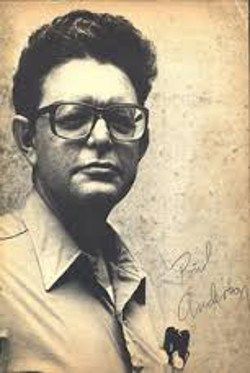"Crime Fiction and Film Noir."
By William Marling (born 1951).
Final version published as Chapter 9 of A Companion to Film Noir (2013).
Article (22 pages, 62 notes).
Online (HERE) (PDF).
"Noir is by now so thoroughly ingrained in public consciousness that its possible reuses are far from exhausted."
ORDINARILY IT'S BEST to define terms before beginning a discussion, but with the term "noir" there doesn't seem to be any universally-applicable objective denotation (or at least one that everybody is willing to agree upon), although the term does seem to arouse plenty of subjective connotations (and some heat, as well). To get an idea of what we mean, go to "What Is Noir?" on Mystery*File (HERE), especially the "Comments" section; these other entries could also prove helpful: "Five Noir Novels of the 1940's and 1950's" (HERE) and "Twelve Anthologies of Hard-Boiled and Noir Stories" (HERE).
We must confess that we've never understood the fascination that noir (written or filmed) exercises over readers, viewers, and critics. Our view, deriving from a more sanguine out-look on life, is that the noir universe makes an interesting place to while away a few hours, but that spending too much time there can be hazardous to your health—your mental health. We're guessing it has to do with how the world has been treating you lately: if nothing ever seems to work right, if your love life is ebbing, if the Pepto Bismol failed to subdue that volcanic burrito you had for lunch, then you're definitely ready for a trip to Noirville.
Just how did noir get its start? You probably think it began with Chandler, Hammett, or Daly:
"It is often noted that American film noir owes a debt to writers such as Dashiell Hammett and Raymond Chandler, who first appeared in the pulp magazine Black Mask. While they and that magazine were important (and are treated below), the real beginning of noir fiction lies in the prose of newspapermen such as Jack Lait, Ben Hecht, and William R. Burnett, who chron-icled the rise of Al Capone. These authors created a mass 'public' of newspaper readers for this subject. Back then 'the causes of crime were not elucidated,' Andrew Bergman notes, 'because there seemed little point to it. Crime was a life style, a way of existing in the world.' Elucidations would come later, as crime itself and the audiences for narrative about it changed."
 |
| Jack Lait |
 |
| Ben Hecht |
 |
| William R. Burnett |
It was inevitable, thanks to these newshawks, that sooner or later real life crime would make its way to Hollywood's silver screens:
". . . these early authors of noir source material . . . developed their skills and sense of audience in New York, Chicago or other large Eastern cities, and then they went to Los Angeles . . . hailing from Chicago or New York, sources of the Capone legend, [they] wrote about criminals. They were newspapermen writing for a broad national ‘public,’ an audience that read papers and magazines, that saw newsreels and films, that was generally Christian and bourgeois, likely to be employed but concerned about the growing Depression, and formed by domestic family life and heterosexual polities. Their ability to address this public carried them to Hollywood, where they became highly-paid script-writers."
Meanwhile, back on the East Coast:
"A second group of noir writers – Hammett, Chandler and others – wrote about detectives, for a smaller ‘counter-public’ that read pulp magazines. This ‘counter-public’ dissented from some of the assumptions in the discourses addressed to the broader ‘public.’ This industry centered on New York City, where a colony of low-paid writers grew up in the late 1910s and early 1920s to supply the boom in pulps. . . . Some of the pulp writers, using a dozen names, wrote 1.5 million words a year. ‘A million words a year is so usual,’ wrote Frank Gruber, who credited this outpouring to the invention of the typewriter. This ‘counter-public’, still attracted to violence, sublimated its interest through the moralistic and anti-criminal behavior of the detective; in this respect it was both more idealistic and more masculinist than the newspaper ‘public.’ It harkened back to an era when command and domination were male prerogatives."
At some point, you know that the uberpulpster creator of Perry Mason will come into the picture:
"After studios purchased his first novels, [Erle Stanley] Gardner moved to Hollywood, not to write scripts, but to learn how the industry worked and be close to the center of production. Over the next decade he became a narrative machine: he invented more series characters – Doug Selby, Lam and Cool, Pete Wennick – while keeping complete control over the filming of his material. Gardner is significant to film noir in several ways. As Leroy Lad Panek points out, Gardner de-emphasized ‘clues’ per se, instead blending them with the personae of his characters. The detective is more involved in reading character then, and characters seem ‘fated’ rather than caught."
As the first and second generations of noir authors have gradually died off, the next crop, less original than their precursors, have carried on as best they can:
"The writers who continued to work in noir fiction after Thompson and Spillane tended to be professional novelists, often college-educated and middle-class, who understood how to re-cycle, or parody, the best of their predecessors."
Resources:
- Our author, William Marling (background HERE and HERE), has also published books about Dashiell Hammett (1983) and Raymond Chandler (1986), as well as The American Roman Noir (1995; description HERE); he has a website, Detnovel.com, (HERE).
The bottom line: "Play with murder enough and it gets you one of two ways. It makes you sick, or you get to like it."


















































